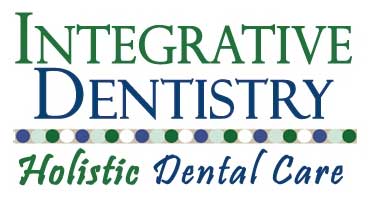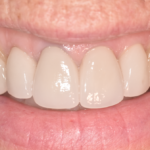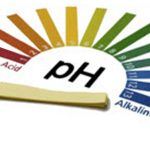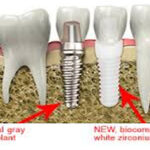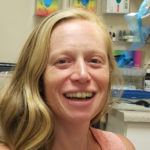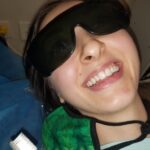Pictures of an Actual Case
At Integrative Dentistry we have seen many patients who believe – or have been told – they need a root canal. Most people, if given a choice, would choose not to do a root canal. But what can be done when there is deep decay? The rest of this article explains how to avoid root canals, even when there is deep decay and pain. While there is never any guarantee that root canal therapy can be avoided in every case, in the vast majority of cases, Dr. O’Rielly has been able to avoid them for his patients by doing the protocol explained below.
X-ray of Tooth With Deep Decay
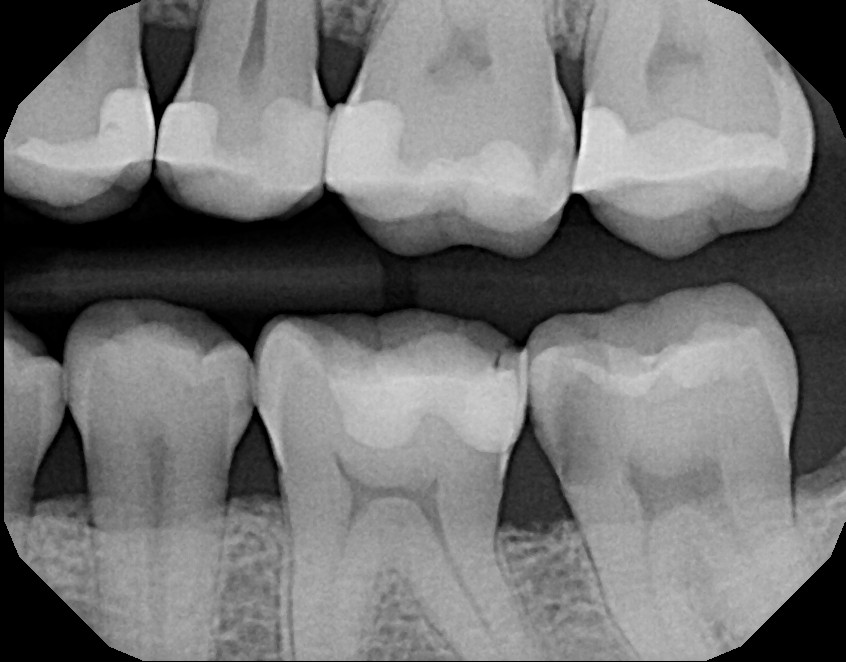
Here is an x-ray of the lower tooth on the right showing a very deep cavity that is near or at the nerve of the tooth. In the vast majority of cases this tooth would be condemned to a root canal and a crown.
This is What Deep Decay Looks Like
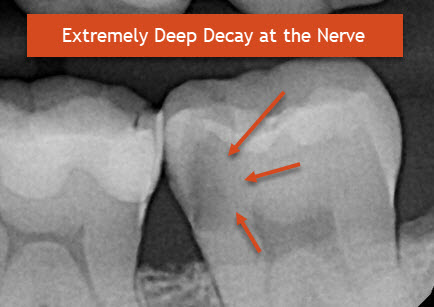
Here is the same x-ray showing the depth of the decay with the red arrows. As you can see it is very deep.
Showing the Nerve or the Root Canal of the Tooth
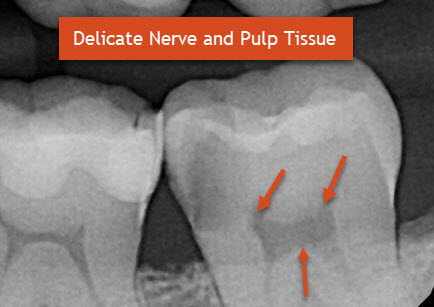
Here is the root canal tissue shown with red arrows, called the pulp of the tooth. If the bacteria from the cavity reaches and invades this tissue then the whole tooth will eventually become infected necessitating the need for root canal therapy.
Don’t Cross This Line if You Want to Avoid a Root Canal
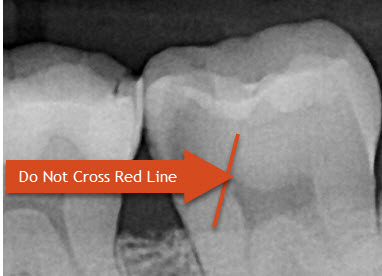
Here is the bottom line. If the decay passes this imaginary red line, you are then infecting the nerve of the tooth and causing a root canal infection. However, if the dentist perforates into the pulp or nerve tissue while doing dental work, then you might as well go ahead and do the root canal at that point as you just opened up the nerve to the outside environment.
Our Protocol to Treat Deep Cavities – A Real Life Case
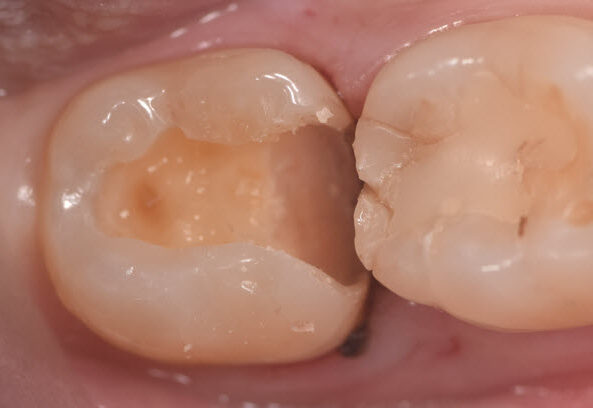
Here is actual treatment done on the tooth in the x-rays above. This is the photo of the tooth after 90 to 95% of the decay has been removed. Notice how deep the decay has extended into the tooth structure.
Showing Danger Points After Deep Decay Removal
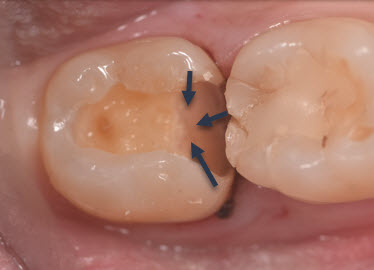
The black arrows show the danger points of causing a root canal. The bottom line is, if treatment goes any deeper than the arrows indicate, the dentist will probably poke into the nerve and cause a root canal.
How to Avoid Perforating Into the Nerve of the Tooth
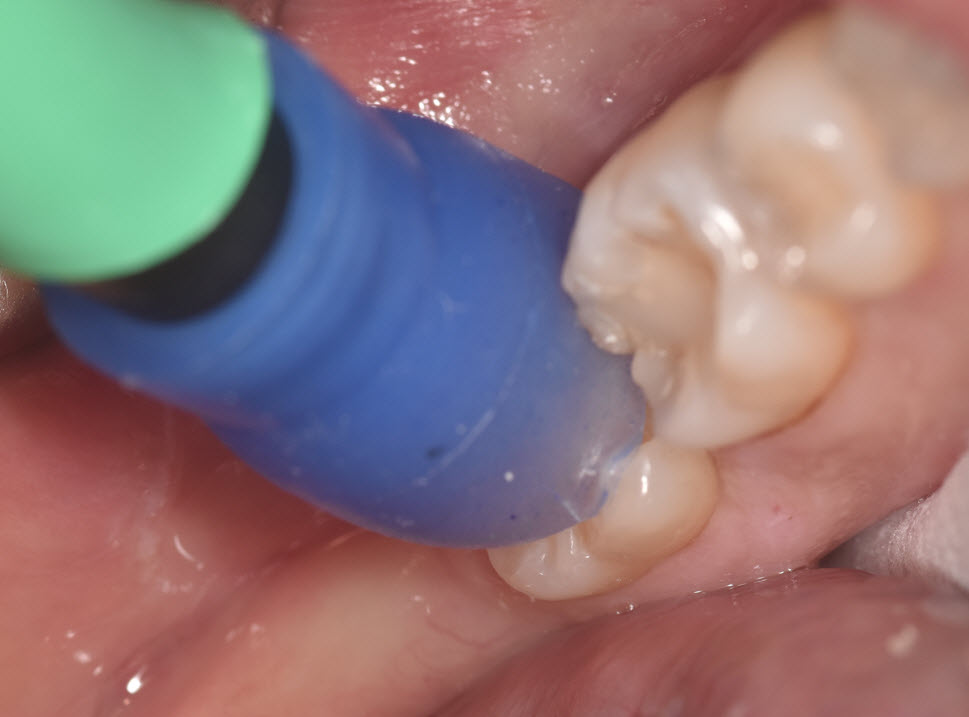
Here is a photo showing ozone gas being applied to the tooth. What ozone does is kill all the bacteria left on the tooth surface and in the tubules of the tooth.
Ozone is basically concentrated oxygen and kills the microbes that cause tooth decay. After ozone application, the tooth is basically sterile and the decay has been completely arrested.
What Ozone Does to the Tooth and Bacteria
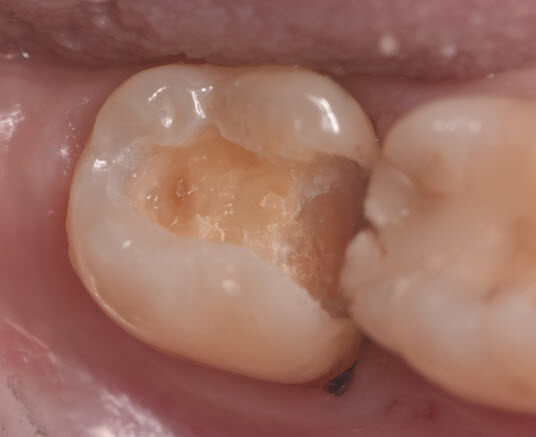
As you can see in this photo, the surface has been ‘etched’ or sterilized by the ozone, meaning that all the bacteria left on the tooth surface has been killed. This conserves the bridge of tooth structure protecting the delicate nerve of the pulp. By using ozone a sterile bridge is created that supports the nerve, essentially forming a protective ‘tooth scab.’
‘
Arrows Showing Ozone Action
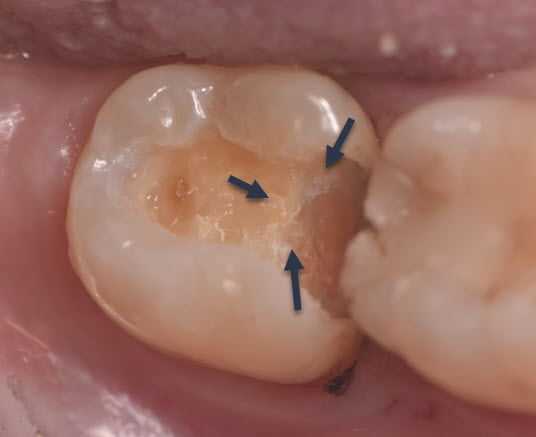
The 3 arrows show the depth of the decay removal. As you can see it is deep and close to the nerve. This is why ozone is so invaluable in sterilizing the remaining tooth structure and protecting the nerve underneath it.
The deepest part is also where the white etching can be seen, which indicates where the ozone has worked to kill the bacteria. Once the ozone treatment is complete, a bio-stim laser is used to revitalize and heal the tooth.
First Layer of Bonding
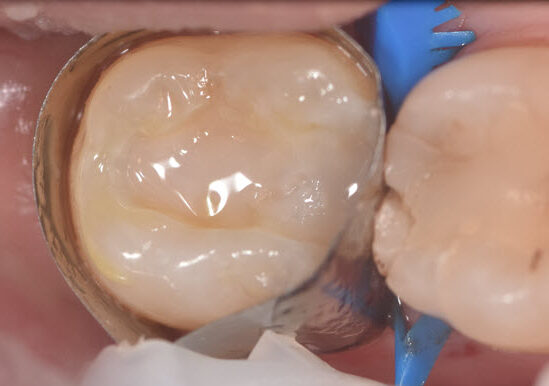
Here you can see the first layer of bonding done with a special type of composite that expands rather than contracts. This composite is a special material made to seal the tooth and protect the nerve, so it can heal by re-mineralizing the tooth from within.
Finished Composite Bonding

Here is the finished composite filling after the final layer has been applied. As you can see, it is a very aesthetic result. In addition, most of the tooth has been preserved by doing a filling vs. a crown and root canal. In Dr. O’Rielly’s experience more aggressive treatment shortens the life of a tooth significantly.
If you liked this case study, please see other ones like it below. I will also post other similar cases in the future. We at Integrative Dentistry believe it’s possible to keep teeth for a lifetime and do it in a healthy way. If you find this information helpful, please share with your friends and spread the word. We appreciate your interest in healthy dentistry.
Links to other articles on ozone dentistry:

Carey O’Rielly DDS has been a practicing dentist for 35 years. He went to USC Dental School and Duke University for his undergraduate degree. He grew up in Laguna Beach and now lives in La Costa with his wife Victoria, who runs his office.
He began his career by owning and operating a network of six offices in the San Francisco Bay Area. Presently he owns a private holistic practice in North County San Diego’s Encinitas.
Dr. O started looking for solutions to his health challenges that resulted from the stress and environmental toxicity that built up over a ten year period running his dental network. He has dedicated himself to learning about oral systemic problems and how dentistry can affect your health. He has applied what he has learned over the last twenty years to ensure he, his staff and his patients are protected from the chemicals and toxic materials found in most dental offices. He has produced an environmentally friendly office that is also peaceful and calm.
He is an expert on dental materials having looked at hundreds of biocompatibility lab tests over the years. He has identified the most bio-friendly materials to use in his practice and which dental materials can be used to replace metal fillings and crowns, including BPA free and fluoride free ‘white’ fillings. He also uses metal-free Zirconia or ceramic implants and PRF (platelet-rich fibrin) grafting materials which come from the patient’s own blood.
Dr. O’Rielly teaches C.E. courses on the systemic effects of gum disease. He is an expert in using phase contrast microscopy for analyzing dental infections, where he shows patients what kind of microbes, i.e. bacteria, amoeba, and yeasts like candida are populating the mouth and affecting the body as a whole.
He has an educational blog and is writing a book on dental health called ‘Hidden Dental Infections: Healing Root Canals and Infected Teeth with the Erbium Laser’ where he discusses dental nutrition, toxic dental materials and the effects of old root canals on inflammation and overall health.
